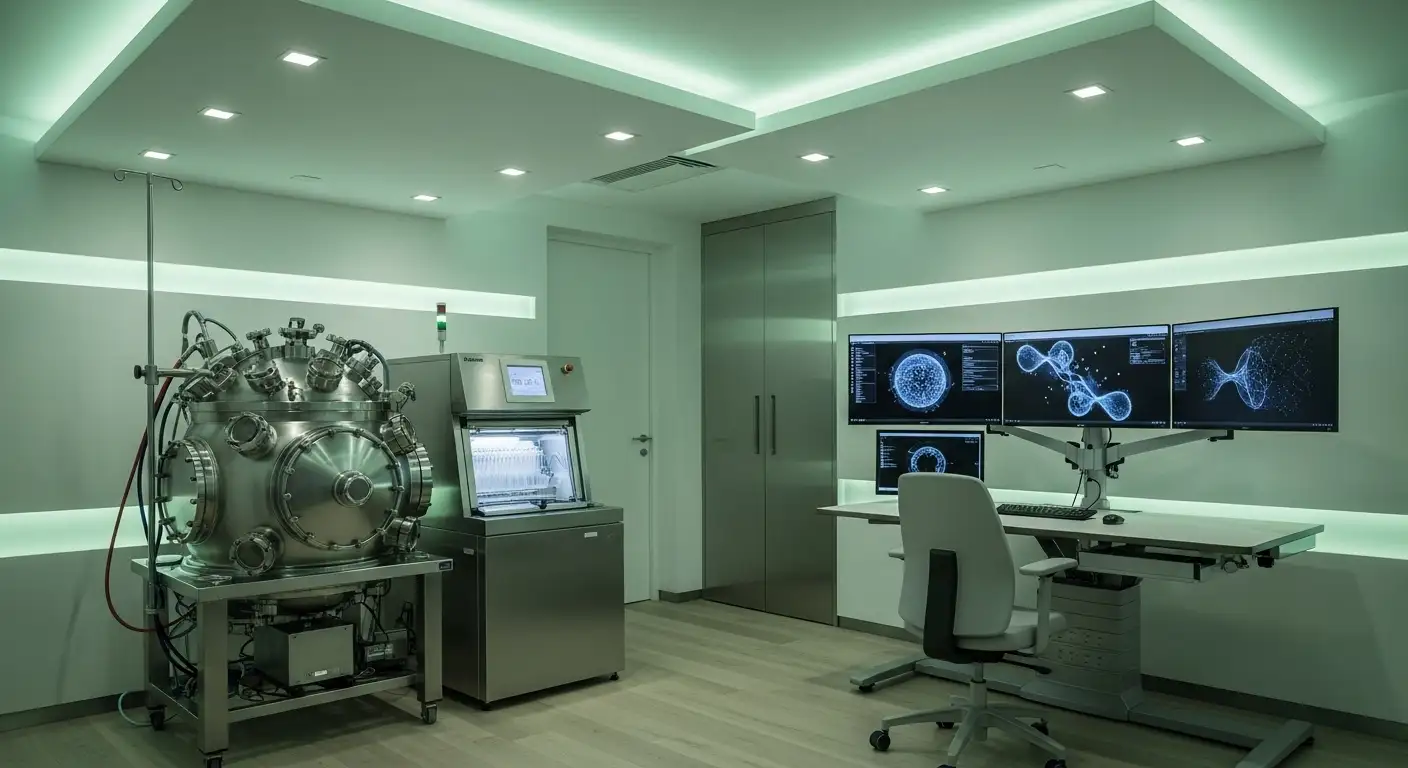What is luteal phase defect and how is it treated?
Understanding Luteal Phase Deficiency: Causes, Symptoms, and Treatments

A Closer Look at the Impact of Luteal Phase Defect on Fertility
Luteal Phase Defect (LPD) is a significant factor in female infertility and recurrent miscarriage. This article explores what LPD is, its underlying causes, symptoms, diagnostic methods, and the various treatment options available to improve reproductive success.
What is Luteal Phase Defect and Its Effect on Fertility

What is luteal phase defect and how does it affect fertility?
Luteal phase defect (LPD) is a condition where the luteal phase of the menstrual cycle is shorter than normal or where there is insufficient secretion of progesterone from the ovaries. Normally, after ovulation, the corpus luteum produces progesterone, a hormone vital for preparing the uterus for pregnancy. In women with LPD, this progesterone production may be inadequate in amount or duration.
A typical luteal phase lasts between 12 and 16 days, providing enough time for the uterine lining to mature and support an embryo. When this phase is shortened to less than 10 days, or when progesterone levels remain low, the endometrial lining does not develop properly. This inadequate preparation can make it difficult for an embryo to implant successfully.
The hormonal imbalance associated with LPD often results in early pregnancy failures, recurrent miscarriages, and challenges with conception. Women may experience symptoms such as spotting, irregular cycles, and a slow increase in basal body temperature. However, diagnosis remains complex, involving blood tests for hormone levels and ultrasound imaging to assess the thickness of the uterine lining.
To improve fertility, treatment strategies typically include progesterone supplementation, fertility medications like Clomiphene citrate, or human chorionic gonadotropin (HCG). These interventions aim to support the luteal phase, bolster hormone levels, and create a more receptive environment for embryo implantation.
Understanding and managing LPD is essential for women experiencing unexplained infertility or recurrent pregnancy loss, as proper treatment can significantly enhance their chances of conception and maintaining a healthy pregnancy.
Causes and Underlying Mechanisms of Luteal Phase Defect

What are the causes and underlying mechanisms of luteal phase defect?
Luteal phase defect (LPD) is mainly caused by the ovaries not producing enough progesterone after ovulation. This hormonal deficiency often results from impaired function of the corpus luteum, which is responsible for secreting progesterone during this phase. When the corpus luteum is dysfunctional, it may produce lower levels of progesterone or fail to sustain its secretion long enough, leading to a short luteal phase.
Several factors can impair corpus luteum function. For instance, abnormal follicular development can hinder the proper formation of the corpus luteum. An inadequate surge of luteinizing hormone (LH), which triggers ovulation and luteinization, can also reduce progesterone production. Additionally, conditions like low cholesterol levels, known as hypocholesterolemia, can limit steroid hormone synthesis since cholesterol is a precursor for progesterone.
Disruptions in hormonal regulation play a significant role. Imbalances in gonadotropins, such as abnormal patterns of LH and follicle-stimulating hormone (FSH), can impair the normal progression of luteal development. Neuroendocrine issues like hyperprolactinemia (excess prolactin) and hypothyroidism can interfere with the hormonal signals essential for stable progesterone production.
Furthermore, the endometrium's response to ovarian hormones may be faulty, including inadequate receptor expression or receptivity, which diminishes the endometrial transformation needed for pregnancy implantation.
The underlying mechanisms of LPD involve complex interactions between ovarian hormone secretion, neuroendocrine regulation, and uterine receptivity. When these processes are disrupted, the duration of the luteal phase can shorten to less than 10 days, or progesterone levels may stay too low to support an early pregnancy.
While the condition is often associated with infertility and increased miscarriage risk, diagnosing and pinpointing the exact cause remains challenging. It is generally understood to be multifactorial, involving hormonal imbalances, ovarian dysfunction, and endometrial factors.
Overall, understanding these mechanisms underscores the importance of hormonal balance for fertility and pregnancy preservation, guiding treatment options that aim to correct these deficiencies.
Symptoms and Diagnosis of Luteal Phase Defect

What symptoms are associated with luteal phase defect?
Symptoms linked to luteal phase defect often involve signs of inadequate progesterone support, which can affect fertility and pregnancy outcomes. Women may notice spotting or bleeding between periods, which indicates insufficient uterine lining development. A common symptom is a luteal phase shorter than 10 days, making conception more difficult due to premature withdrawal of the uterine lining.
Some women experience a slow rise in basal body temperature after ovulation, reflecting insufficient hormone support. Irregular or more frequent menstrual cycles are also typical, indicating cycle disruption. Physical symptoms like breast swelling, headaches, mood swings, weight gain, and sleep disturbances can occur due to hormonal imbalance.
Many women with LPD are asymptomatic, discovering the condition only when facing fertility challenges. Overall, these symptoms suggest a lack of sufficient progesterone to maintain the uterine lining, thereby impairing the implantation process and increasing miscarriage risk.
How is luteal phase defect diagnosed?
Diagnosis of LPD mainly relies on hormonal testing and ultrasound evaluations. Blood tests measuring serum progesterone levels during the midluteal phase are essential. Levels below 10 ng/mL often raise suspicion of progesterone deficiency.
In addition to progesterone, tests for other hormones like LH, FSH, and estrogen help assess ovarian function and overall hormonal balance. Ultrasonography is used to evaluate the thickness of the endometrial lining and determine the length of the luteal phase. A thin uterine lining or a luteal phase shorter than 10 days supports the diagnosis.
Because no single test definitively confirms LPD, clinicians usually combine clinical symptoms, hormone levels, basal body temperature tracking, and endometrial assessment. The most accepted diagnostic criteria involve a midluteal serum progesterone level below 10 ng/mL or multiple measurements consistently below 30 ng/mL. This comprehensive approach helps tailor appropriate treatment strategies for women experiencing reproductive challenges.
Limitations of current diagnostic approaches
Despite available methods, diagnosing LPD remains challenging. Hormonal levels can fluctuate, and a single measurement may not accurately reflect luteal phase function. Ultrasound assessments of endometrial thickness are supportive but not definitive, as the lining can vary day-to-day.
Moreover, current tests lack high specificity and sensitivity, leading to potential misdiagnosis. There is no universally accepted consistent diagnostic standard, which adds complexity to identifying women who might benefit from targeted treatments.
Consequently, diagnosis often involves a combination of clinical judgment and multiple assessments over time. Research is ongoing to find more reliable and practical diagnostic techniques, but for now, clinicians rely on a holistic evaluation of symptoms, hormone profiles, and ultrasound findings to identify luteal phase deficiency.
Treatment and Management of Luteal Phase Defect

What are the treatment options and management strategies for luteal phase defect?
Managing luteal phase defect primarily aims to correct the insufficient production or response to progesterone that hampers implantation and early pregnancy. One of the most common approaches is progesterone supplementation. This can be administered through vaginal suppositories or gels, which deliver the hormone directly to the uterus, ensuring higher local concentrations with fewer systemic side effects. Oral progesterone is generally less effective because of its short half-life, but intramuscular injections are also options in certain cases.
Medications that stimulate ovulation and support the luteal phase are frequently used. Clomiphene citrate (Clomid) promotes follicular development and can improve luteal support once ovulation occurs. Human menopausal gonadotropins (hMG) and human chorionic gonadotropin (hCG) injections are also employed to trigger ovulation and boost endogenous progesterone production.
Addressing underlying health conditions is equally crucial. For example, thyroid disorders like hypothyroidism are managed with levothyroxine, while hyperprolactinemia may require bromocriptine. Lifestyle modifications such as maintaining a healthy weight, reducing stress, and avoiding excessive exercise are significant in improving hormone balance.
Follow-up care often involves measuring hormone levels to confirm ovulation and adequate progesterone levels. Endometrial assessments can help determine receptivity to support ongoing pregnancy efforts. In many cases, comprehensive management combining hormonal therapy and lifestyle changes can significantly enhance fertility prospects in women with luteal phase defect.
Impact on Fertility and Pregnancy Outcomes and Future Perspectives

How does luteal phase defect affect fertility and pregnancy outcomes?
Luteal phase defect (LPD) can significantly impair a woman's ability to conceive and carry a pregnancy successfully. This condition results from insufficient progesterone production after ovulation, which is crucial for preparing and maintaining the uterine lining for implantation.
A short luteal phase, typically less than 10 days, leads to a thinner endometrial lining that is less receptive to the embryo. Because the uterine lining may break down prematurely, embryo implantation becomes more difficult, raising the chances of early pregnancy loss or miscarriage.
Women with LPD often experience symptoms such as spotting, irregular cycles, and a slower rise in basal body temperature post-ovulation. They might also face repeated conception failures due to inadequate hormonal support.
Diagnosis often involves blood tests measuring progesterone levels, as well as endometrial assessments. Without proper treatment, LPD can hinder conception and increase the risk of recurrent pregnancy loss. Fortunately, managing LPD with progesterone supplements, ovulation induction medications, and lifestyle adjustments has improved outcomes for many women, helping them achieve successful pregnancies.
What is the trigger for the start of the luteal phase in the menstrual cycle?
The beginning of the luteal phase is triggered by ovulation, which is initiated by a surge in luteinizing hormone (LH). This surge causes the mature follicle in the ovary to rupture and release an egg.
Following ovulation, the follicle transforms into the corpus luteum, a hormone-secreting structure. The corpus luteum begins producing progesterone immediately, marking the start of the luteal phase.
This progesterone production is essential for thickening and preparing the uterine lining. If pregnancy occurs, progesterone continues to support the pregnancy until the placenta can produce sufficient hormones to sustain it. If fertilization does not happen, the corpus luteum degenerates, hormone levels fall, and menstruation begins, marking the end of the cycle.
Understanding this sequence underscores the importance of ovulation and proper hormonal balance for a healthy reproductive cycle and successful conception.
| Aspect | Details | Additional Notes |
|---|---|---|
| Main hormone | LH surge | Trigger for ovulation |
| Resulting structure | Corpus luteum | Produces progesterone post-ovulation |
| Focus | Supports uterine lining | Essential for implantation |
| Cycle marker | Onset of the luteal phase | Follows ovulation |
This knowledge enhances our understanding of female reproductive physiology and helps guide effective diagnosis and treatments for fertility challenges related to luteal phase issues.
Summary and Future Directions
Luteal phase defect remains a complex condition affecting many women’s reproductive health. Advances in diagnostic techniques and personalized treatment strategies have improved outcomes, but controversies persist regarding precise diagnosis and optimal therapy. Continued research into hormonal regulation, non-invasive diagnostics, and integrative approaches like Chinese medicine offers promising avenues for better management and improved fertility success rates.
References
- Luteal Phase Defect: Causes, Symptoms & Treatment
- Luteal phase defect (LPD) - Pacific Fertility Center Los Angeles
- Diagnosis and treatment of luteal phase deficiency: a committee ...
- Luteal Phase Defect (LPD): Symptoms, Causes, and Treatment
- Luteal Phase Dysfunction Treatment & Management
- Luteal Phase Defect - RESOLVE: The National Infertility Association
- Diagnosis and treatment of luteal phase deficiency: a committee ...
- Luteal Phase Defect - Female Infertility - Austin Fertility Center



































































































